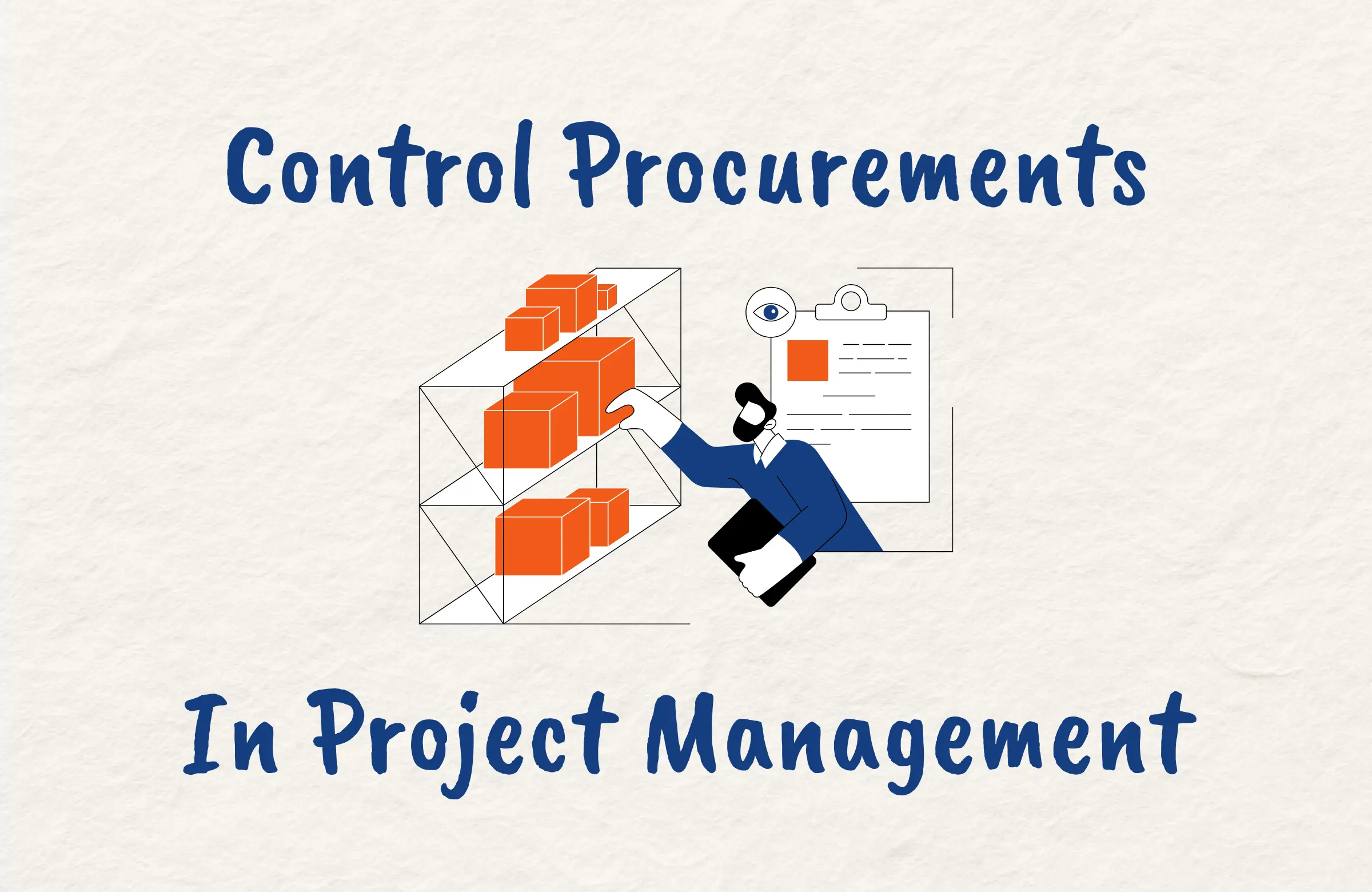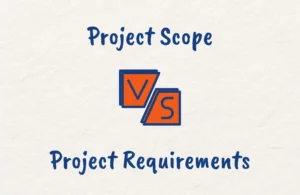When managing a project that involves outsourcing, you need to utilize Project Procurement Management practices to ensure project success. One of these practices happens to be the Control Procurements process.
Controlling procurements is a critical project management process, and you need to manage procurement relationships, monitor contract performance, and make any necessary changes and corrections during project execution.
In this article, we’ll explore the activities to be carried out during the Control Procurements process, as well as the inputs, tools, techniques, and outputs (ITTOs) of this process. This knowledge is vital for managing projects that involve procurement as well as for PMP exam preparation if you are a candidate.
What is Procurement Management in Project Management?
Project Procurement Management is the process of purchasing or acquiring products, services, or results needed from outside the project team to perform project activities.
For a project, you may need to procure or acquire goods and services such as raw materials, components, equipment, or new technologies from external sources.
Effective procurement management ensures that the project gets the best value from every purchase and acquisition.
It involves planning what needs to be procured, determining whether to acquire or make the items, conducting market research, preparing documents like requests for proposals and contracts, obtaining seller responses, selecting a seller, and managing the contract.
Procurement Management Processes
The key processes in procurement management according to the PMBOK Guide 6th Edition are:
- Plan Procurement Management: Identifying what to procure and how.
- Conduct Procurements: Obtaining seller responses, quotes, bids, and proposals.
- Control Procurements: Managing relationships with sellers, monitoring performance, and completing each procurement by verifying and closing contracts.
Control Procurements Process
The Control Procurements process involves coordinating and monitoring procurements during project execution to ensure optimal performance.
As the project manager, you are responsible for managing relationships with sellers, monitoring contract performance, tracking payments and invoices, inspecting work, performing audits, and driving the delivery of expected procurement results.
Key activities in controlling procurements include resolving claims or disputes, implementing changes through formal change control and updating procurement records, conducting performance reviews to compare progress to plans, forecasting estimates to completion, and closing procurements upon completion.
This process focuses on ensuring that procurement objectives are met, buyers and sellers fulfill contractual obligations, and taking action where procurements veer off track. By actively controlling procurements, you can minimize cost overruns, delays, and quality issues stemming from purchased products or services.
Why do We Need to Control the Procurement Process in Project Management?
Controlling procurements is critical for the success of any project that involves purchasing goods or services from external sellers.
There are several key reasons why procurement management is essential including:
Ensure Contract Compliance
You need to ensure that sellers meet obligations as per contract terms related to schedule, cost, quality, and scope. Tracking performance and taking corrective action prevents problems.
Optimize Value
Monitoring procurements helps get the best value by identifying opportunities for improvement and savings. You can negotiate better terms over the project lifecycle.
Manage Risks
Controlling procurements enables proactive risk management by allowing early identification of issues that pose risks like delayed deliveries, poor quality, or cost overruns.
Facilitate Decisions
Reviews and audits generate data to support decisions about changes, payments, claims, settlements, and contract closure. Informed decisions optimize outcomes.
Maintain Relationships
Strong relationships bring mutual benefits as ongoing communication and issue resolution maintain trust and harmony with sellers, preventing disputes.
Control Procurement Process Activities
Controlling procurements involves various activities to ensure optimal outcomes. As a project manager, you will need to perform the following activities in the Control Procurements process:
1. Monitor Overall Performance
- Track seller progress against the contract requirements for schedule, cost, scope, and quality
- Identify variances from plans and take preventive or corrective action
- Forecast estimates at completion using earned value or trend analysis
2. Manage Seller Relationships
- Maintain ongoing communications with sellers through meetings, emails, reports
- Resolve issues, claims, and disputes through negotiation and conflict resolution
- Make site visits and inspections to review work and prevent problems
- Motivate sellers to optimize performance
3. Manage Contract Changes
- Assess requested changes through change control and approve if beneficial
- Update procurement documents and project documents for approved changes
- Manage unapproved constructive changes and resolve associated claims
4. Verify Compliance
- Audit procurements to ensure adherence to organizational policies
- Inspect seller’s work for quality and contractual compliance
- Review and approve invoices before payment to sellers
5. Close Contracts
- Obtain formal acceptance for seller deliverables
- Settle open claims, disputes, and payments through negotiation
- Update records, document lessons learned, and archive files
Proactively performing these activities ensures that value is maximized from procurements to meet project objectives.
Control Procurements Process Inputs
Various inputs must be reviewed and analyzed to effectively control procurements. Key inputs include:
Project Management Plan
The procurement, change control, risk, and requirements management plans guide procurement oversight activities. The schedule and cost baselines help assess seller performance.
Project Documents
Documents like the risk register, requirements traceability matrix, lessons learned register, and milestone list enable analysis of procurement status.
Agreements
Reviewing contracts and agreements ensures sellers meet obligations. Terms and conditions define performance criteria.
Seller Deliverables
Delivered work products, reports, and invoices provide evidence to verify seller progress and authorize payments.
Performance Data
Performance reviews, earned value data, and quality inspection results reveal overall procurement health to highlight issues.
Change Requests
Approved changes to contracts and seller change requests require procurement plan updates.
Enterprise Environmental Factors
Organizational procurement policies, codes of ethics, change control systems, and financial systems influence the control process.
Organizational Process Assets
Lessons learned, financial databases, risk databases, and standardized processes provide insights to optimize procurements.
Control Procurements Process Tools and Techniques
Controlling procurements requires using specific tools and techniques for assessing performance and driving optimal outcomes. Key techniques include:
Inspections
Inspections involve structured reviews of seller progress and deliverables both remotely and on-site. Inspections identify defects and performance issues for correction.
Performance Reviews
Analyzing schedule, cost, quality, and scope performance data determines sellers’ adherence to contracts. Metrics are compared to targets to identify variances.
Earned Value Analysis
Earned value metrics like schedule and cost variances and performance indices help forecast sellers’ estimated completion.
Trend Analysis
Assessing trends in seller errors, delays, or cost overruns predicts future performance so that corrective actions are taken proactively.
Data Analysis
Techniques like correlation and regression examine procurement data to gain insights into issues and improve decision-making.
Audits
Audits are structured reviews of procurement policies, procedures, and documentation to verify compliance with organizational norms.
Payment Management
Payments are managed by reviewing invoices, tying payments to deliverables, and approving only validated amounts to control costs.
Change Control
Change requests are assessed through a formal process to determine impacts and approve beneficial changes to contracts.
Claims Administration
Disputes and claims are documented and managed as per contract terms to reach optimal resolutions.
Control Procurements Process Outputs
The Control Procurements process generates various outputs that help optimize contract performance and project outcomes. Key outputs include:
Requested Seller Changes
Proposed additions, modifications, or variances to the original procurement requirements or contracts are documented and processed as change requests.
Approved Change Requests
Changes approved through the change control process result in updates to procurement documents and management plans.
Performance Reports
Performance reviews, earned value data, and trend analyses are consolidated into reports that provide visibility into procurement health.
Payment Requests
Verified invoices and completion of contract milestones prompt the creation of payment requests as per agreement terms.
Recommended Actions
Data analyses and audits reveal recommendations to improve procurement management through preventive or corrective steps.
Records Updates
All procurement records like contracts, documentation, procurement management plans, the risk register, and lessons learned are updated to reflect the latest changes.
Closed Procurements
Upon satisfactory completion of all contract terms, procurements are formally closed through vendor notification and final verification.
Organizational Process Assets Updates
Historical databases, procurement metrics, closed contracts, and lessons learned help improve future procurement efficiency.
These outputs become vital inputs to subsequent procurement activities and enable you to achieve project objectives through well-managed procurements.
Control Procurements Process PMP Exam Tips
Controlling procurement can be challenging on the PMP exam especially if you do not handle procurements in your organization. Here are some key points to tackle exam questions:
- Know the tools like inspections, performance reviews, EVA, and audits that provide procurement visibility.
- Understand how change control works for procurements; follow the same process as other change requests.
- Payments should be tied to seller deliverables as per contracts and invoices reviewed diligently before approval.
- Claims must be documented and managed carefully as per agreements to prevent disputes.
- Updating the risk register is critical as new procurement risks can arise during execution.
- The lessons learned register should capture positive and negative procurement experiences for improvement.
- Procurement changes lead to updates in project documents, management plans, and baselines through change control.
- Closed procurements require formal seller acceptance of deliverables and financial closure.
- Verify that you meet obligations as the buyer when answering situational questions.
- Remember procurement deals with sellers while general stakeholder management applies to all stakeholders.
Stay calm, analyze questions carefully, and focus on performing as the project manager overseeing procurements in the context provided.
Summary of Control Procurements Process
The Control Procurements process is vital for maximizing value from seller relationships and contracts. By proactively managing procurement relationships, monitoring performance, driving progress, and resolving issues, you can optimize costs, quality, schedule, and stakeholder satisfaction.
This process requires considerable attention and effort, but pays rich dividends. Applying lessons learned improves subsequent procurements. With robust procurement oversight, you can ensure projects achieve desired outcomes within budget constraints.





